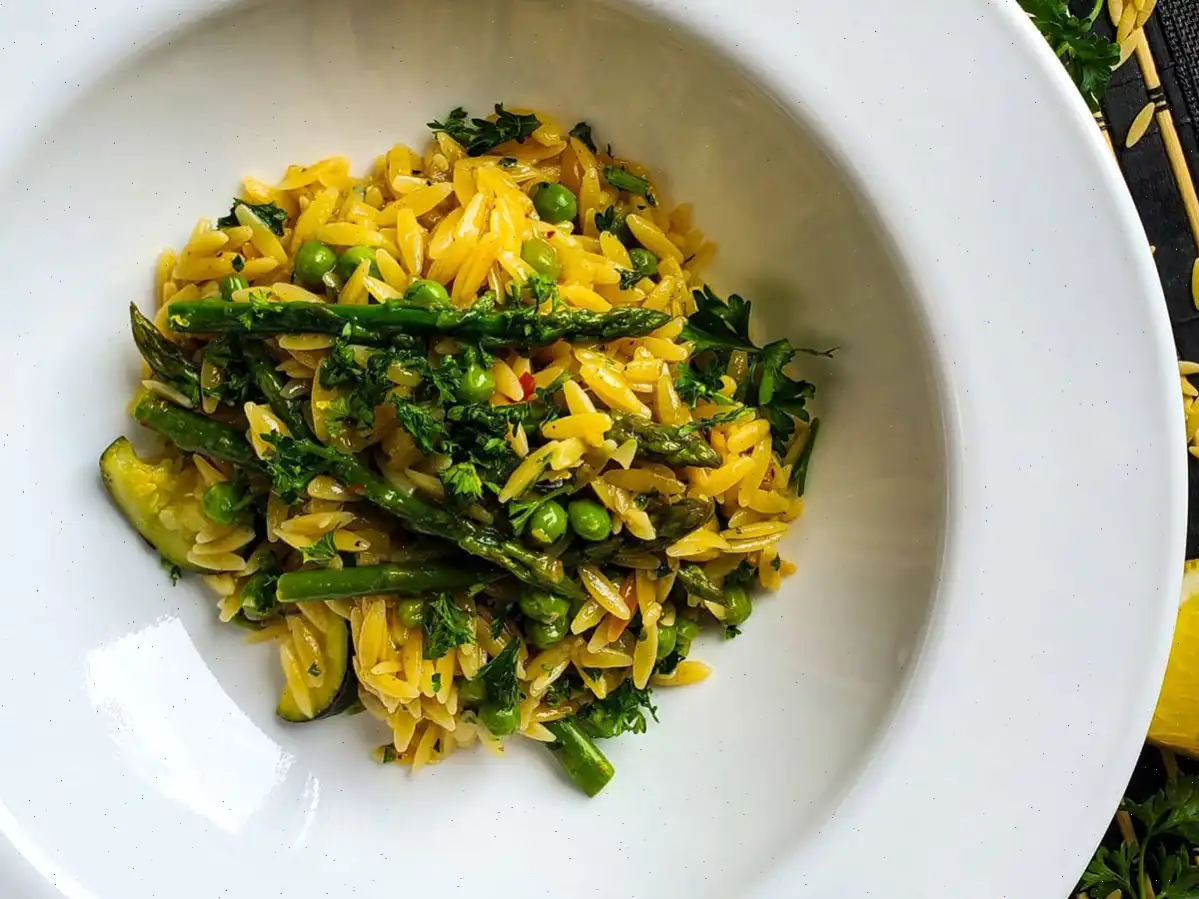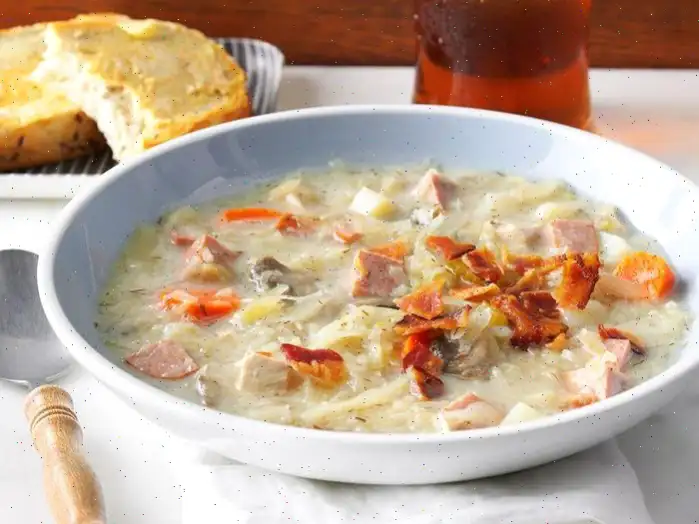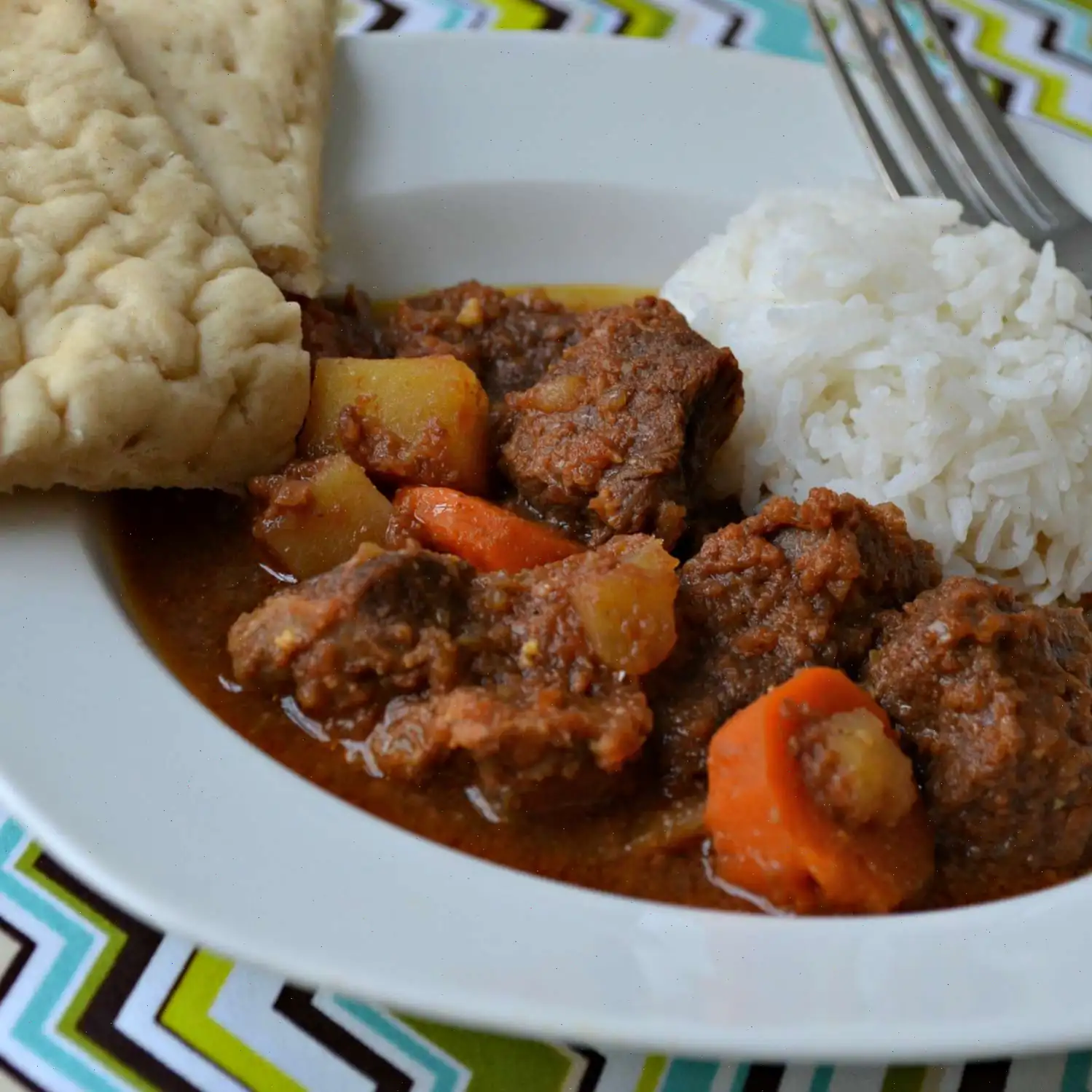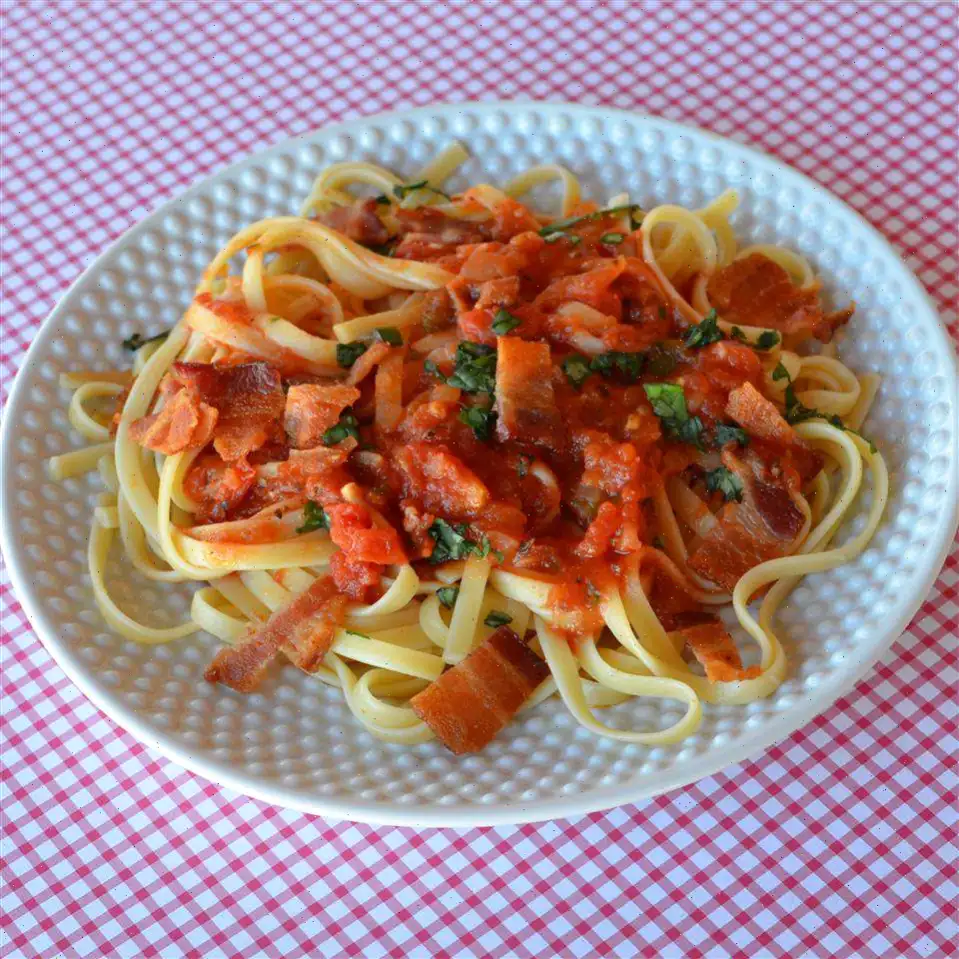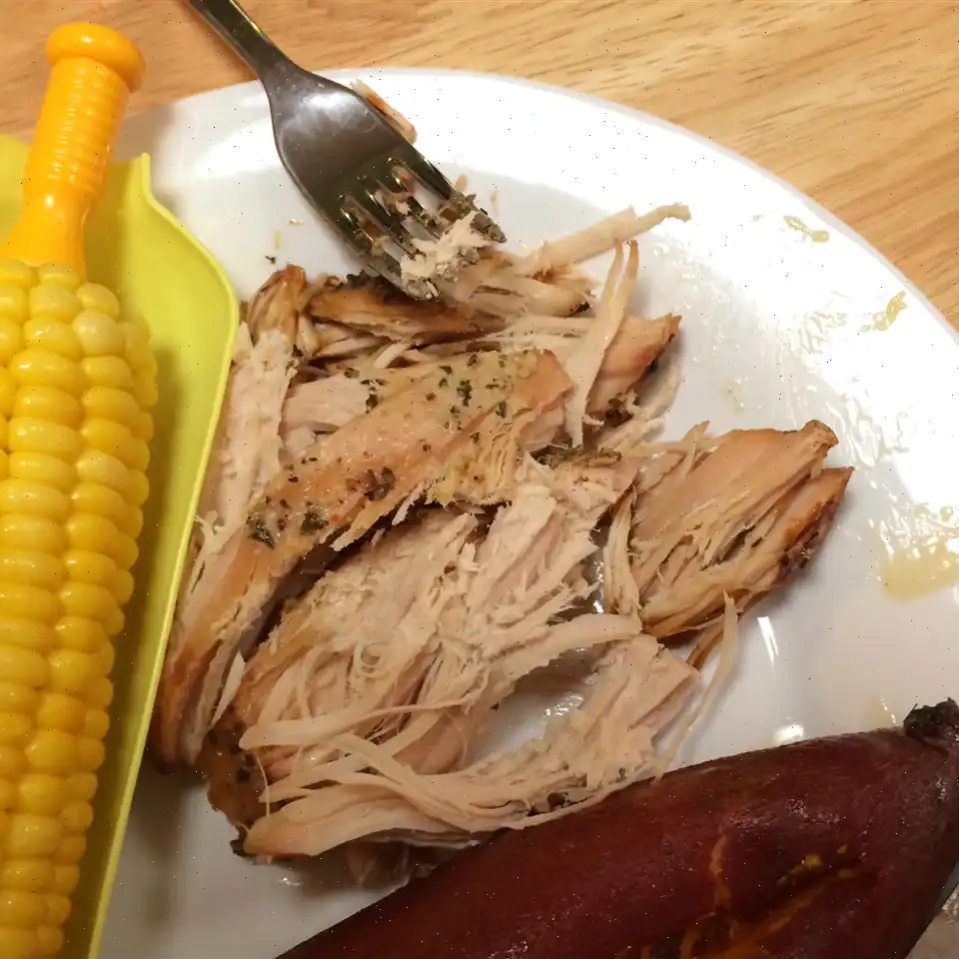
Zucchini and Asparagus Orzo Risotto Recipe
If you're craving a grain bowl but don't have any grains on hand, orzo makes an excellent substitute. This recipe creates a dish that mimics the comforting flavors of a spring risotto, featuring fresh vegetables and zesty notes. Lemon zest, juice, asparagus, zucchini, and peas come together to make this meal light yet satisfying. The orzo cooks in just about 20 minutes, offering a quicker alternative to rice-based risottos, which usually take longer and demand more attention. The vegetables are sauted in a mix of butter, oil, and red pepper flakes, adding a burst of flavor. When the orzo is stirred in, followed by a splash of white wine, the dish takes on a subtle sweetness and a pleasant level of heat, depending on how much red pepper you add. The combination of butter and oil makes it rich, while the addition of a cheese rind gives the dish a creamy texture. Finish with some Grana Padano cheese and fresh herbs for a complete, mouthwatering meal.
Ingredients
- 2 cups vegetarian chicken-flavored broth
- 2 cups low-sodium vegetable broth
- 3 tablespoons unsalted butter
- 1 tablespoon extra-virgin olive oil
- medium yellow onion, diced
- teaspoon red pepper flakes
- Sea salt and freshly cracked black pepper, to taste
- 1 zucchini, halved lengthwise and sliced
- 2 cups uncooked orzo pasta
- cup dry white wine
- 1 hard cheese rind
- teaspoon sea salt
- 1 bunch fresh asparagus, trimmed and cut into 2-inch pieces
- 1 cup frozen peas
- cup finely grated Grana Padano cheese
- cup chopped fresh parsley
- 1 lemon, zested and juiced
Directions
- In a medium saucepan, combine the vegetarian chicken broth and vegetable broth. Place over medium heat and bring to a boil. Once boiling, reduce the heat to a simmer and cover, keeping it warm for later use.
- In a 12-inch skillet, melt the butter and olive oil together over medium heat. Add the diced onion, red pepper flakes, and a pinch of sea salt and pepper. Cook, stirring occasionally, until the onion becomes soft and translucent.
- Add the zucchini slices to the skillet along with another pinch of sea salt. Continue to cook, stirring occasionally, until the zucchini softens, about 4-5 minutes.
- Stir in the uncooked orzo pasta, cooking for a few minutes, stirring frequently to ensure it doesn't stick to the pan.
- Pour in the white wine, stirring constantly as it bubbles. Allow the bubbling to subside before proceeding.
- Slowly pour in the hot broth, bringing the mixture back to a boil. Once it boils, reduce the heat to low and add the cheese rind and teaspoon of sea salt. Stir occasionally, allowing the orzo to absorb most of the liquid, about 10 minutes.
- Add the asparagus pieces and frozen peas to the skillet. Continue simmering for another 5 minutes, or until the orzo is fully cooked and most of the liquid is absorbed.
- Remove the skillet from the heat and discard the cheese rind. Stir in the grated Grana Padano cheese, fresh parsley, lemon zest, lemon juice, and freshly cracked black pepper to taste.
- Taste the dish and adjust the seasoning as necessary. Serve hot, garnished with additional parsley or lemon zest if desired.
Nutrition Facts (per serving)
- Calories: 641
- Fat: 21g
- Carbohydrates: 89g
- Protein: 28g
- Vitamin C: 93mg (103% DV)
- Calcium: 245mg (19% DV)
- Iron: 6mg (31% DV)
- Potassium: 923mg (20% DV)
The Story Behind Zucchini and Asparagus Orzo Risotto
Zucchini and asparagus orzo risotto is a modern twist on traditional Italian risotto, a dish with origins in Northern Italy, particularly in the regions of Lombardy and Veneto. Risotto itself dates back to the 14th century and was initially prepared using locally grown rice varieties such as Arborio and Carnaroli. The idea of substituting rice with orzo pasta emerged more recently as home cooks sought quicker alternatives that still offer the creamy texture of a classic risotto.
Regional Characteristics
Though risotto is traditionally a Northern Italian specialty, the use of zucchini and asparagus reflects seasonal ingredients commonly found in springtime across Italy. Asparagus, for example, is a staple in Veneto, while zucchini is widely used in Tuscan and Roman cuisine. The addition of fresh herbs, lemon zest, and Grana Padano cheese gives this dish a distinctive Mediterranean flair, making it lighter and brighter than its more indulgent rice-based counterparts.
What Sets It Apart from Similar Dishes
Unlike classic risotto made from rice, orzo provides a faster cooking time and a slightly different texture that retains a tender bite while still absorbing the rich flavors of broth, wine, and cheese. The combination of zucchini and asparagus also differentiates it from standard risottos, which often rely on mushrooms, seafood, or saffron. This version emphasizes fresh vegetables and a subtle balance of acidity from lemon juice, creating a lighter, more spring-oriented dish.
Typical Serving Occasions
This risotto is versatile and can be served as a main course or as an elegant side dish. It is often featured in family dinners, brunch gatherings, or casual Italian-inspired meals. Its colorful presentation and creamy texture also make it suitable for festive occasions and dinner parties, where it pairs beautifully with grilled fish, roasted chicken, or even a light salad.
Interesting Facts
- Orzo, which means barley in Italian, is actually a type of pasta shaped like large grains of rice, and it cooks much faster than traditional risotto rice.
- The technique of adding a cheese rind during cooking is borrowed from traditional risotto-making and enhances the creamy texture without overwhelming the dish with salt.
- Spring vegetables like asparagus and zucchini were historically considered luxurious ingredients in Italy, and their inclusion reflects a seasonal celebration of freshness and lightness.
- Though risotto requires constant stirring, using orzo reduces active cooking time, making this version a practical option for weeknight meals while maintaining gourmet appeal.
- The use of lemon juice and zest brightens the dish, highlighting the freshness of the vegetables and balancing the richness of butter and cheese.
You can listen to this recipe in AI audio format. Simply click the play button below to listen to the content in a format that suits you best. It’s a great way to absorb information on the go!
FAQ about Zucchini and Asparagus Orzo Risotto Recipe
Comments
Jonathan Smith
10/07/2022 08:39:22 PM
Prepared as a main course. Skipped the zucchini and included baby bella mushrooms instead.
Patrick Williams
04/28/2023 06:26:40 PM
Firstly, I recommend adding the zucchini or asparagus after everything else is cooked. We found them to be too mushy and did not enjoy the texture. Also, there was an excess of broth in the dish.


